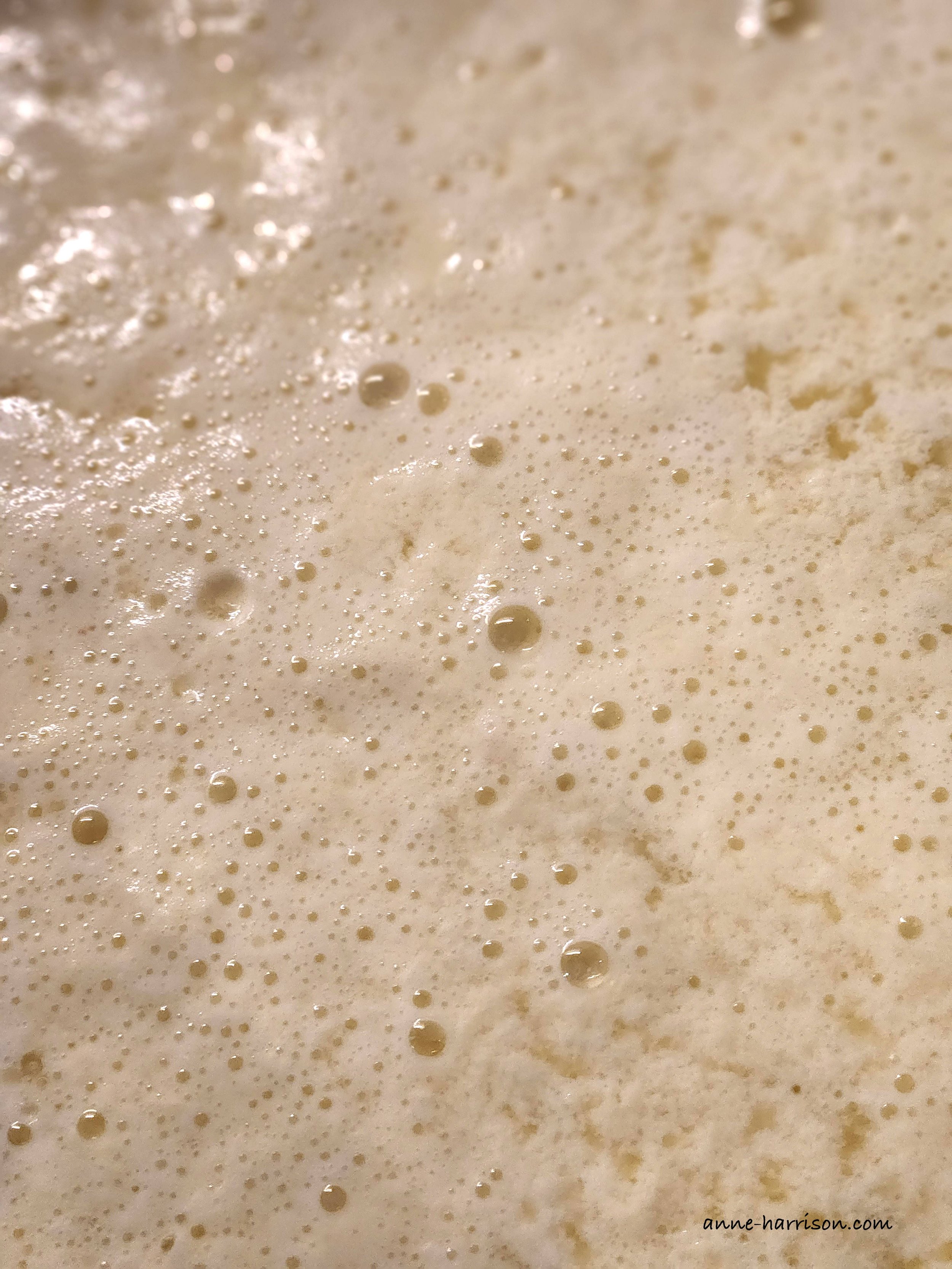Adventures in Tofu
Draining the pureed beans © A. Harrison
For whatever the reason, I decided to make tofu this week.
It proved surprisingly simple. I left dried soy beans to soak while I was at work, pureed them with fresh water, then strained the mixture through a fine sieve to get soy milk. (The pulp ended up as a mulch in the veggie patch.) I then heated the milk without letting it boil, added a little vinegar as a coagulant, before scooping out the resultant curds and wrapping them in muslin. Using a sieve, and a pot filled with water as weight, I let the curds drain for 20 minutes or so. (A more detailed recipe will follow when I perfect silken tofu, which is made more in the tradition of a custard, using a water bath.) Voilà, fresh tofu, with nothing added.
The question is, who first did this, and why? Drying beans has long been used to preserve them, with a long soak necessary before cooking. But pounding them to a mush and straining would involve a lot of effort back in the day. Which is, I suppose, why the wealthy had slaves and servants.
The important part, however, is adding the coagulant to form the curds. Cheese, it is said, was accidentally made when, for easy storage and transport, milk was stored in a sheep / cow / camel stomach (the origin myths vary by country), with the rennet in the lining of the stomach producing cheese. Rennet is a collection of enzymes found in the stomach of ruminant mammals, which curdles casein, the main protein in milk. (The latin for cheese is caseus. A wound is described as caseating when it produces pus, due to its appearance.)
Tofu, however, is different. It existed in Asia long before cheese was made there (cheese being relatively new to the Far East, where lactose intolerance is high). It’s believed tofu originated in China during the Han Dynasty. Legend ascribes its invention to Prince Liu An (179-122 BCE). What a prince was doing in a kitchen is not recorded, but it’s believed he (or a cook) accidentally added nigari to some soy milk, thus curdling it. In 1960, a stone mural was discovered in an Han Dynasty tomb which supports the theory of an Han origin for tofu. Prince Liu, however, was sadly lacking from the mural.
Tofu production spread to Japan during the Nara period (710-794 ACE), and by the 10th and 11th centuries had reached Vietnam. Its spread coincided with the spread of Buddhism; Buddhist monks were vegetarian, and tofu and soy was an important source of protein. (This was in a time when protein was unknown, and tofu was never labelled as a ‘meat substitute’. Like cheese used by Medieval monks, it proved more filling than greens alone.)
The earliest documentation of the word tofu in English appears via translation from the Spanish; Domingo Fernández Nayages penned A Collection of Voyages and Travels which describes the making of tofu. James Flint, an English, merchant used the word towfu when writing to Benjamin Franklin in 1770.
In the 16th C, Li Shizhen, a Chinese physician, described a method of making tofu in his Compendium of Materia Medica, a work which lists all the materia medica (any substance used for healing) used in Chinese medicine at that time. It took him some 27 years to write. I know the feeling.
Tofu varies from silken to firm, depending upon the manner in which it is made, and the flavour is dependant both on the soy beans used and how long the milk is heated, as well as the coagulant used. I used vinegar (home made, naturally, from the leftover wine which sporadically appears in my house). Nigari, a by-product of sea-salt production and rich in variety of minerals, is the traditional coagulant used, and one I will eventually source.
Proteins in soy milk have a negative surface charge, causing them to repel one another. Heating the milk denatures the protein, exposing hydrophobic (literally, water-hating) groups which are normally on the inside of the protein structure. Cations from the vinegar bind these negatively charged groups, neutralising the negative charge. With electrostatic repulsion reduced, these hydrophobic interactions dominate, allowing the formation of protein aggregates which are the bean curd.
I still find it remarkable the process was discovered at all.
Enjoy my writing? Please subscribe here to follow my blog. Or perhaps you’d like to buy me a coffee? (Or a pony?)
If you like my photos please click either here or on the link in my header to buy (or simply browse) my photos. Or else, please click here to buy either my poetry or novel ebooks. I even have a YouTube channel. Thank you!
Plus, this post contains affiliate links, from which I (potentially) earn a small commission.




